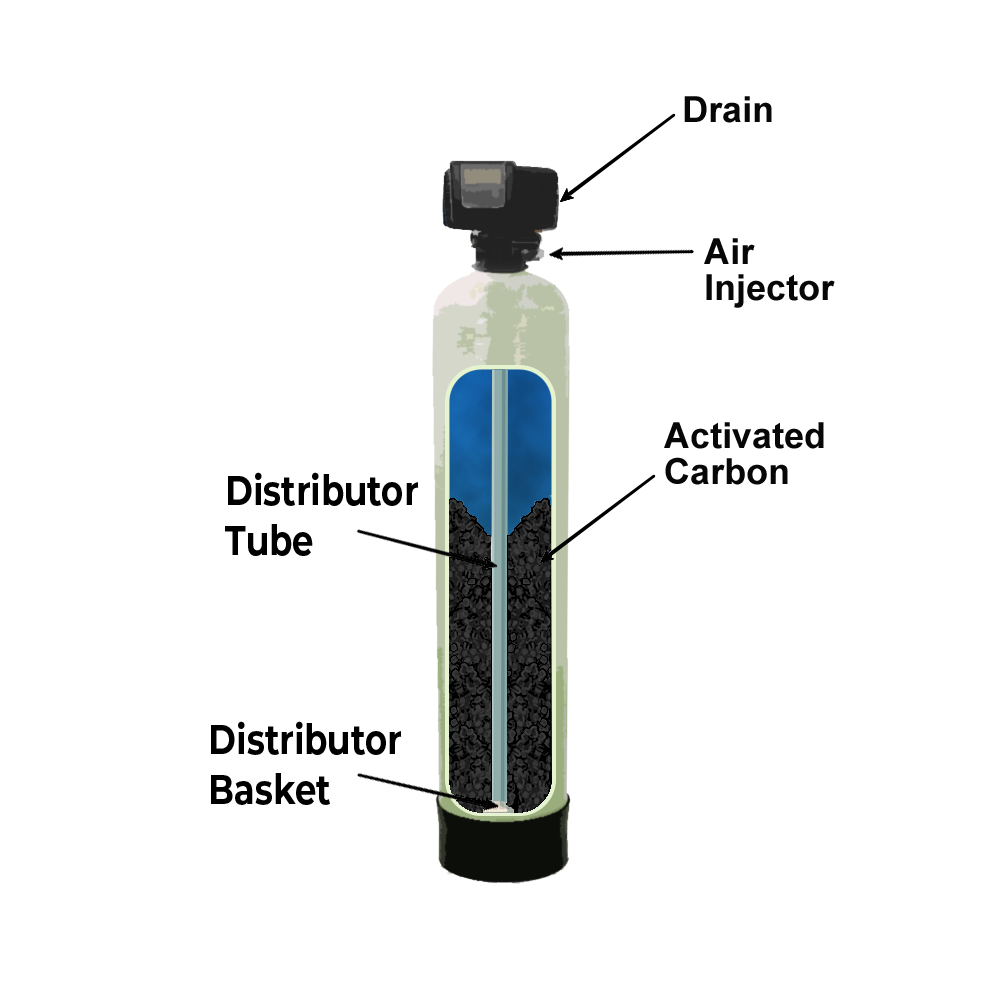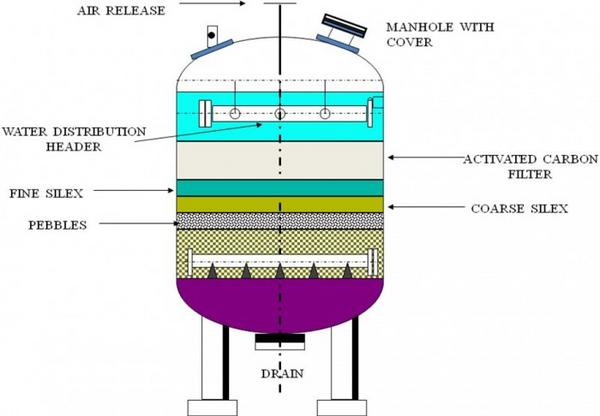The Historical Significance of Charcoal Filtration
By the 18th century, sugar refiners in Europe and America used charred animal bones and wood fragments to decolorize syrups, improving both flavor and appearance [2]. Native American healers, too, applied charcoal poultices to insect bites and burns, intuitively exploiting its toxin-binding surface long before chemistry could explain why. Fast-forward to the 19th century: urban centers embraced charcoal filtration in waterworks, while soldiers donned gas masks lined with activated carbon to neutralize chemical warfare agents.
Today’s activated carbon is an engineered marvel, with thousands of square meters of internal pore area packed into tiny granules or blocks. It still works the same way—adsorbing contaminants via Van der Waals forces—but does so on a massive scale, safeguarding drinking water, industrial effluents, and even hospital air. For those curious about how ancient wisdom meets cutting-edge design, explore our guide on carbon removal filters, where history and high performance converge.
The Science Behind Activated Carbon Adsorption
At its essence, activated carbon is a microscopic magnet for pollutants. Its secret lies in an intricate labyrinth of pores—one gram of material can hold over 3,000 m² of internal surface area, offering millions of tiny traps for organic molecules and chemicals [1]. When water or air flows through a carbon bed, contaminants don’t travel with the stream; they stick to the carbon walls through weak but cumulative Van der Waals attractions.

This adsorption is both physical and chemical. Organic compounds—chlorine, pesticides, volatile organic compounds (VOCs), odors—are lured into the pore network and held fast. Studies report that properly activated carbon can remove over 90 percent of chlorine and many VOCs from tap water, delivering water that tastes and smells dramatically better [5]. Air purification systems use the same principle to trap chemical vapors and odors, creating noticeably fresher indoor environments by snaring molecules before they reach our lungs.
But these pores aren’t infinite. Over time, trapped pollutants fill the voids and block new adsorption sites. Regular replacement or regeneration is essential to maintain performance. I still recall the simple joy of swapping out my under-sink carbon cartridge and tasting the bright, clean water afterward—a small ritual, yet a testament to the science quietly at work in every glass.
Comparing Carbon Filter Formats
Not all activated carbon comes in the same shape. Manufacturers offer granular pieces, compact blocks, and even powders—each optimized for specific flows and contaminant profiles. Choosing the right format can mean the difference between a sluggish system and crystal-clear water at full pressure.
| Filter Format | Structure | Advantages | Typical Applications |
|---|---|---|---|
| Granular Activated Carbon (GAC) | Loose granules with large inter-particle voids | High flow rate; gentle pressure drop | Point-of-entry systems; kitchen water filters |
| Carbon Block | Compressed fine carbon into a solid block | Captures smaller particles; uniform flow | Under-sink units; whole-house setups |
| Powdered Activated Carbon (PAC) | Finely milled powder | Rapid adsorption; large surface area | Emergency water treatment; industrial spill cleanup |

Granular carbon’s loose packing allows faster flows, making it ideal where you need bulk removal at low pressure drop. Block filters, by contrast, are denser and can trap finer contaminants, though they require more robust pumps. PAC shines in industrial or emergency contexts, where speed trumps ease of replacement—and you don’t mind filtering out the carbon afterward.
Carbon Filtration In Water Purification
Picture every faucet in your home defended by a silent guardian: a block of charcoal. As water courses through, chlorine molecules, organic chemicals, and unpleasant tastes and odors cling to the carbon surface, yielding clear, fresh-tasting water [4]. Communities and manufacturers pair carbon filters with sediment prefilters or reverse osmosis membranes for layered protection—learn more in our overview of reverse osmosis water filtration.
Families notice the difference immediately: coffee tastes richer, soups are clearer, and that lingering “plastic” hint disappears. One homeowner told me, “It’s like rediscovering tap water for the first time.” Yet carbon filters aren’t a catch-all; they won’t remove dissolved minerals or salts. Instead, they excel at organics and taste, making them an indispensable first line of defense in home and industrial water treatment alike.
Activated Carbon In Air Filtration Systems
Imagine stepping indoors and the stale, chemical-laden air simply vanishing. That’s the effect of an activated carbon stage in your air purifier. Millions of tiny pores on each granule trap VOCs, odors, and harmful vapors before they ever reach your lungs [5]. Whether it’s the afterpaint mustiness or lingering kitchen smells, carbon filters adsorb these pollutants, delivering a noticeably fresher atmosphere.
Research indicates activated carbon can cut indoor formaldehyde levels by over 50 percent in just a few hours, offering relief for those sensitive to chemical triggers [4]. I installed a small carbon module in my hall air purifier and within days guests remarked on how “clean” the air felt—no small feat when your city experiences seasonal smog.
Industrial Applications of Carbon Filtration
Beyond homes, activated carbon powers critical industrial processes. In biogas plants, granular carbon beds scrub siloxanes and sulfur compounds, preventing corrosion and abrasive damage to compressors [4]. Mining operations use carbon to adsorb gold-cyanide complexes from leachate, converting muddy pools into gleaming ingots [1]. Pharmaceutical and sugar refineries rely on it to clarify syrups and decolorize solutions, ensuring products meet the strictest purity standards [5]. It’s a behind-the-scenes hero, quietly boosting performance and cutting costs across sectors.
Proper Carbon Filter Care and Optimization
Even the best carbon media needs routine attention. Once pores fill, flow slows and adsorption wanes. I note the installation date of each cartridge and sniff my tap water every few weeks; any hint of stale or chemical taste signals it’s time for a swap [5]. Monthly backwashes, if supported, can flush trapped particles and extend the filter’s life, while a gentle bleach rinse restores up to 90 percent of adsorption capacity in some granular beds [3].

For whole-house systems, I clean the housing gaskets and seals to prevent leaks and ensure a tight fit. Under-sink units benefit from biannual cartridge changes, while industrial beds may require thermal reactivation or full media replacement every twelve months to avoid channeling and bacterial growth [4]. A little upkeep goes a long way toward crisp, reliable performance.
Sustainable Sources And Recycling Of Activated Carbon
Activated carbon need not come from nonrenewable wood sources. Coconut shells, bamboo stalks, nutshells, and even coffee husks transform agricultural waste into high-performance media, offering fine pore structures that trap chlorine and organics with ease [1]. I love that these by-products—once headed for compost—become the guardians of our drinking water.
When spent, carbon can be thermally reactivated at over 800 °C, driving off pollutants and recovering up to 95 percent of its original capacity. Recycled media then delivers around 85 percent of fresh performance, cutting waste and cost nearly in half [2]. Emerging techniques like microwave-assisted reactivation and solar-driven regeneration shave up to 30 percent off energy use [4]. For a closer look at eco-friendly water treatment, check out our guide on sustainable water treatment solutions.
Emerging Innovations in Carbon Filtration
The frontier of filtration now harnesses graphene oxide membranes—ultra-thin sheets with nanometer-scale pores that capture contaminants at unprecedented speed and capacity. Lab tests show a fivefold boost in pollutant removal versus conventional carbon, shrinking both footprint and energy demands [1]. Hybrid nanostructures combining carbon nanotubes and metal–organic frameworks promise up to 99 percent efficiency in removing heavy metals and VOCs [4].
Consumers report that these next-gen filters last longer and need fewer replacements—one municipal trial cut cartridge swaps by half thanks to optimized pore architecture [5]. As material science advances, personalized filtration systems that adapt in real time to water chemistry are within reach, making pure, safe water an everyday expectation rather than a luxury.
Key Takeaways On Carbon Filtration
Activated carbon’s remarkable capacity—over 3,000 m² of internal surface area per gram—lets it adsorb chlorine, VOCs, odors, and chemical vapors, delivering crisp water and clean air [1][4]. From household taps to industrial gas scrubbers, its versatility powers critical purification tasks worldwide.
Recognizing the strengths and limits of carbon filters—excellent for organics but not for dissolved minerals—helps you design a balanced treatment plan. Routine maintenance, sustainable sourcing, and emerging nanotechnologies ensure that this age-old remedy remains at the cutting edge of clean water and air.
With simple upkeep and informed choices, carbon filtration offers an affordable, eco-friendly shield between you and unseen contaminants. Whether you’re sipping your morning tea or drawing a deep, clean breath, activated carbon works silently to keep every drop and every gulp safe.
Citations
“`html
Complete Top Picks Comparison – 23 Products
| Product | Source | Price | Rating | Image | Buy |
|---|---|---|---|---|---|
| Brita Water Pitcher, Metro Elite Filter, Removes 99% of Lead, Includes 1 Filter, 6-Cup Capacity, White | $32.37 | ★★★★☆ |  | Buy Now | |
| Waterdrop Water Filter Pitcher with 1 Filter, 200-Gallon Long-Life, 10-Cup Large Water Filter Pitcher, NSF Certified, 5X Times Lifetime, Reduces PFOA/PFOS, Chlorine, Blue | $19.99 | ★★★★★ |  | Buy Now | |
| Ehm Ultra Premium Alkaline Water Filter Pitcher – 3.8L, Activated Carbon Filter- BPA Free, Healthy, Clean, & Toxin-Free Mineralized Alkaline Water in Minutes- Up to 9.5 pH-2025 | $34.99 | ★★★★★ |  | Buy Now | |
| Waterdrop Electric Water Filter Pitcher, Reduce 99.6% of Lead and 45+ Impurities, 200-Gallon Rechargeable Water Dispenser, Instant 15-Cup Countertop System, NSF/ANSI 401&53&42&372, NOT Reduce TDS | $49.99 | ★★★★☆ |  | Buy Now | |
| Brita Water Pitcher, Everyday Elite Filter, Removes 99% of Lead, Includes 1 Filter, 10-Cup Capacity, White | $34.99 | ★★★★★ |  | Buy Now | |
| Water Filter Replacement Compatible with Brita Water Pitchers and Dispensers, by DESENRUIS for Classic 35557, OB03, Mavea 107007, Reduce Chlorine and Bad Taste, BPA free, Pack of 3 | $14.99 | ★★★★☆ |  | Buy Now | |
| Brita Stream Rapids Water Filter Pitcher, Carbon Gray, Large 10 Cup, 1 Count | $46.55 | ★★★★☆ |  | Buy Now | |
| PUR Water Pitcher & Dispenser Replacement Filter 4-Pack, Genuine PUR Filter, 2-in-1 Powerful Filtration and Faster Filtration, 8-Month Value, Blue (PPF900Z4) | $22.46 | ★★★★★ |  | Buy Now | |
| Brita Stream Pitcher Water Filter for Pitchers and Dispensers, BPA-Free, Replaces 1,800 Plastic Water Bottles a Year, Lasts Two Months or 40 Gallons, Includes 3 Filters | $19.92 | ★★★★★ |  | Buy Now | |
| GLACIER FRESH 10 Cup Purela Glass Water Pitcher with 1 Ultrafiltration Membrane and Activated Carbon Filter, Reduces 99% Chlorine, PFOA&PFOS, Coliforms, White | $52.99 | ★★★★☆ |  | Buy Now | |
| 2024 Used ZOTAC GeForce RTX 3070-8GD6 X-GAMING Video Cards RTX 3070 8GB GDDR6 256bit GPU Graphic Card | $125.91 | ☆☆☆☆☆ |  | Buy Now | |
| VTOMAN FlashSpeed 1000 Portable Power Station 2000W 828Wh LiFeP04 Battery For Outdoor Camping Tent Travel | $273.52 | ☆☆☆☆☆ |  | Buy Now | |
| Pool Filter Drain Plug Pool Pump Replacement Parts Water Outlet Nozzle Skimmer Cover Gasket Seal For Spa Tank Maintenance | $10.90 | ☆☆☆☆☆ |  | Buy Now | |
| MAXSUN Graphics Cards RTX 4060 Terminator 8G GDDR6 GPU 128bit PCI Express 4.0 X8 Gaming Video Card Desktop Computer Components | $153.37 | ☆☆☆☆☆ |  | Buy Now | |
| Sail Solar 48V 51.2V LiFePO4 Battery LV 6000 Cycle Times 100Ah 200Ah | $392.33 | ☆☆☆☆☆ |  | Buy Now | |
| USED Video card RTX 3070M (3070 Laptop) 8GB 256Bit DDR6 Non LHR Perfectly Compatible With Mining BTC ETH Speed Reaches 65+MH/S | $119.60 | ☆☆☆☆☆ |  | Buy Now | |
| Bincoo Transparent Coffee Cup Stainless Steel Long Filter Cold Extraction Cup Glass Soaking Cold Brewing Pot Office 500ml Water | $24.96 | ☆☆☆☆☆ |  | Buy Now | |
| USED Graphics Card RTX 3060 12GB 8pin Placa De Video GAME NVIDIA GPU GDDR6 192bit HDMI*1 DP*3 PCI Express 4.0 x16 rtx 3060 12gb | $108.93 | ☆☆☆☆☆ |  | Buy Now | |
| Petrol Filter Parking Heater Intake Filter Marine Water Separator Replacement Oil Filter Auto For Webasto/ Eberspacher | $6.94 | ☆☆☆☆☆ |  | Buy Now | |
| ECOFLOW-Tracker solaire portable DELTA PRO / DELTA MAX, station d’alimentation pour le plein air, 30% | $681.89 | ☆☆☆☆☆ |  | Buy Now | |
| GE XWFE Water Filter – White | $26.99 | ☆☆☆☆☆ |  | Buy Now | |
| 3-Stage Whole House Water Filter System 20″x4.5″ with Spin Down Sediment Filter | $289.99 | ☆☆☆☆☆ |  | Buy Now | |
| Dreo Reverse Osmosis Water Filter Countertop, 7-Stage RO Water Filtration System | $169.99 | ☆☆☆☆☆ |  | Buy Now |
“`

